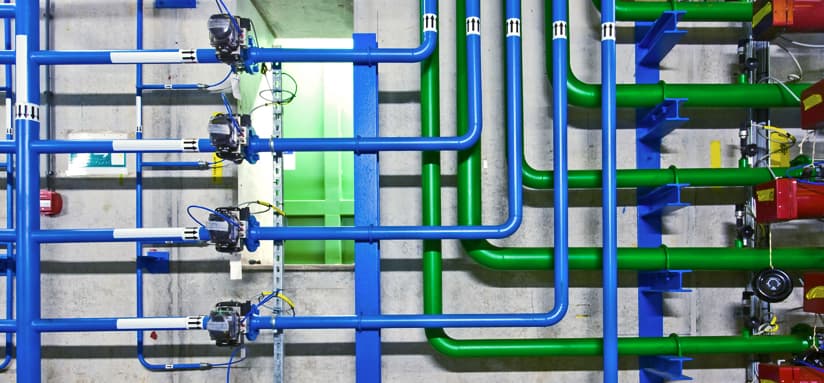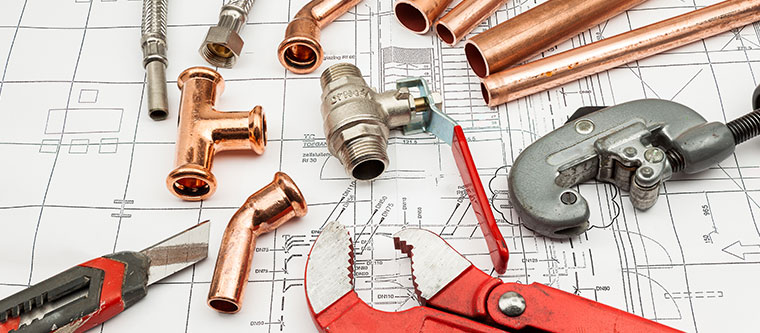Understanding Your Property's Plumbing System Anatomy
Understanding Your Property's Plumbing System Anatomy
Blog Article
Here underneath you can find additional really good answers when it comes to The Inner Workings of Your Home's Plumbing.

Recognizing how your home's plumbing system works is vital for each house owner. From providing clean water for alcohol consumption, cooking, and showering to securely getting rid of wastewater, a well-maintained pipes system is essential for your household's wellness and convenience. In this comprehensive overview, we'll explore the elaborate network that comprises your home's pipes and offer ideas on upkeep, upgrades, and handling common issues.
Introduction
Your home's plumbing system is greater than simply a network of pipes; it's a complicated system that guarantees you have access to clean water and effective wastewater elimination. Recognizing its parts and just how they interact can help you prevent costly repair work and guarantee whatever runs efficiently.
Standard Elements of a Plumbing System
Pipelines and Tubing
At the heart of your pipes system are the pipes and tubes that carry water throughout your home. These can be made of various materials such as copper, PVC, or PEX, each with its benefits in regards to durability and cost-effectiveness.
Fixtures: Sinks, Toilets, Showers, etc.
Components like sinks, bathrooms, showers, and tubs are where water is made use of in your house. Understanding exactly how these components attach to the pipes system helps in identifying issues and preparing upgrades.
Shutoffs and Shut-off Factors
Valves control the flow of water in your plumbing system. Shut-off shutoffs are critical throughout emergencies or when you need to make fixings, allowing you to isolate parts of the system without disrupting water flow to the entire home.
Water System System
Key Water Line
The major water line attaches your home to the local water or a private well. It's where water enters your home and is dispersed to numerous fixtures.
Water Meter and Pressure Regulatory Authority
The water meter steps your water usage, while a pressure regulator makes sure that water flows at a safe stress throughout your home's pipes system, preventing damages to pipelines and fixtures.
Cold Water vs. Hot Water Lines
Understanding the distinction between cold water lines, which supply water straight from the primary, and warm water lines, which carry heated water from the hot water heater, helps in troubleshooting and planning for upgrades.
Drainage System
Drain Pipes Water Lines and Traps
Drain pipelines lug wastewater far from sinks, showers, and commodes to the sewage system or septic tank. Traps avoid drain gases from entering your home and likewise trap debris that could cause clogs.
Ventilation Pipes
Ventilation pipes allow air into the drainage system, avoiding suction that could reduce water drainage and trigger catches to vacant. Correct air flow is vital for preserving the honesty of your pipes system.
Relevance of Correct Drain
Making sure appropriate drainage prevents back-ups and water damage. Consistently cleansing drains pipes and maintaining traps can avoid expensive fixings and extend the life of your plumbing system.
Water Heater
Kinds Of Hot Water Heater
Hot water heater can be tankless or traditional tank-style. Tankless heaters heat water as needed, while containers save warmed water for prompt usage.
Updating Your Pipes System
Reasons for Updating
Updating to water-efficient fixtures or changing old pipelines can boost water top quality, minimize water expenses, and enhance the value of your home.
Modern Pipes Technologies and Their Advantages
Explore modern technologies like clever leak detectors, water-saving bathrooms, and energy-efficient water heaters that can conserve cash and minimize environmental impact.
Price Considerations and ROI
Calculate the ahead of time costs versus lasting cost savings when considering plumbing upgrades. Numerous upgrades spend for themselves with reduced energy costs and fewer repairs.
Just How Water Heaters Attach to the Plumbing System
Understanding just how water heaters attach to both the cold water supply and hot water circulation lines assists in detecting issues like not enough hot water or leakages.
Upkeep Tips for Water Heaters
Regularly purging your water heater to eliminate sediment, inspecting the temperature level settings, and examining for leakages can extend its life expectancy and boost power effectiveness.
Usual Plumbing Concerns
Leaks and Their Reasons
Leaks can take place because of maturing pipes, loose fittings, or high water stress. Addressing leakages promptly avoids water damages and mold and mildew growth.
Blockages and Clogs
Clogs in drains pipes and toilets are typically brought on by flushing non-flushable products or an accumulation of grease and hair. Utilizing drainpipe screens and bearing in mind what drops your drains can avoid obstructions.
Indicators of Plumbing Troubles to Look For
Low water stress, slow drains pipes, foul odors, or uncommonly high water bills are indications of possible plumbing troubles that should be dealt with immediately.
Pipes Maintenance Tips
Routine Assessments and Checks
Set up annual plumbing evaluations to capture issues early. Search for indications of leakages, deterioration, or mineral build-up in taps and showerheads.
DIY Upkeep Tasks
Straightforward tasks like cleansing tap aerators, checking for toilet leaks using color tablets, or shielding revealed pipelines in cool environments can prevent major pipes issues.
When to Call an Expert Plumbing Technician
Know when a pipes problem requires professional expertise. Trying complicated repair work without proper knowledge can result in more damage and higher repair costs.
Tips for Reducing Water Usage
Basic practices like taking care of leakages promptly, taking shorter showers, and running complete loads of laundry and meals can save water and lower your utility expenses.
Eco-Friendly Plumbing Options
Think about sustainable plumbing materials like bamboo for floor covering, which is durable and green, or recycled glass for countertops.
Emergency situation Readiness
Actions to Take Throughout a Pipes Emergency situation
Know where your shut-off valves are located and just how to switch off the water system in case of a ruptured pipe or major leak.
Significance of Having Emergency Calls Helpful
Maintain call info for local plumbers or emergency services readily available for quick feedback throughout a plumbing crisis.
Environmental Influence and Preservation
Water-Saving Fixtures and Appliances
Installing low-flow taps, showerheads, and bathrooms can considerably reduce water use without giving up efficiency.
Do It Yourself Emergency Situation Fixes (When Relevant).
Temporary repairs like utilizing duct tape to patch a leaking pipe or placing a pail under a trickling tap can lessen damages till an expert plumbing technician gets here.
Final thought.
Comprehending the anatomy of your home's plumbing system empowers you to keep it successfully, saving money and time on repair work. By adhering to routine maintenance regimens and staying educated regarding modern-day plumbing technologies, you can ensure your plumbing system runs effectively for several years ahead.
HOW YOUR PLUMBING SYSTEM WORKS
Which Pipes Do What?
Blue lines = fresh water supply entering the building Red lines = hot water supply entering the building Grey lines = pipes carrying waste away from the building and venting pipes carrying gases away from the building (through the roof) YOUR MAIN PLUMBING SYSTEMS
There are two main plumbing systems that support your home s basic plumbing needs one that brings clean water into your home, and one that sends dirty water away from your home. Connected to the toilet, bath, shower, and other faucets in your home, these two systems keep your water flowing in the right directions.
ACCESSING FRESH WATER
Fresh and clean water is brought into your home through the main water supply line . Filtered through one pipe, this water is pressured to flow into the various fixtures in your home at any given time.
This water can be sourced from a well located on your property, a pond or river (mostly cottages), or, as in most cases, from the city s municipal water treatment centre. However, it is important to note that water that is untreated, such as the water siphoned from ponds or rivers, may not be safe to drink. Personal water supplies always need to be treated for hardness and contaminants before consumed.
MUNICIPAL WATER SUPPLIES
Improve taste and odour Remove sediment Eliminate hardness Reduce chlorine COLD WATER SUPPLY VS. HOT WATER SUPPLY
Cold water flows into your home or building through the service line, which then distributes hot or cold water to your fixtures. This line is most commonly run through a central column that runs floor to floor. Hot water runs in short and straight pipes as the longer the pipeline, the more heat that will be lost in the transfer. Having shorter pipes also allows residents to access hot water more quickly.
WASTE WATER SYSTEM
Your wastewater system is divided into two parts pipes that send wastewater away from your home and venting pipes that send sewer gas away from your home. Sewage water travels through pipes that flush the water and waste towards local sewers that are operated and managed by your city or town. Most sewer systems rely on gravity to move the wastewater to where it needs to go.
The further away from your toilet or sink, the larger wastewater pipes become. This allows for waste to be disposed of from various parts of your home or business at once without pipe blockages. The angle and flow of these pipes are also essential for keeping your waste pipes clear of build up.
https://harrisplumbing.ca/how-your-home-plumbing-system-works/

We were shown that editorial about Understanding Your Home's Plumbing Anatomy through an acquaintance on a different web blog. You should set aside a second to promote this article if you enjoyed it. Thank you so much for your time spent reading it.
Book Service Report this page